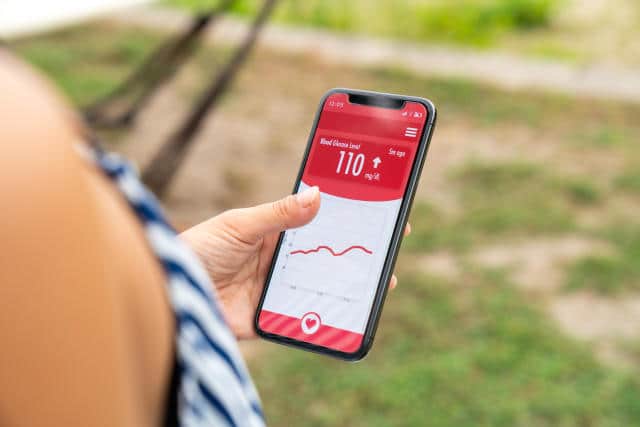Uncovering Hidden Diabetic Cases among Normal Fasting Glucose Populations Using Machine Learning
Introduction:
In a recent breakthrough study published in BMC Medicine, researchers harnessed the power of machine learning to detect diabetic individuals within populations exhibiting normal fasting glucose levels. This innovative approach employs common physical examination indexes to identify asymptomatic cases of diabetes, addressing the critical need for more efficient screening methods and early detection to mitigate complications.
Tip: Please fill out this form to determine whether or not you or a friend are eligible for a CGM and, Also learn about Glucose Trends Analysis
Background:
Diabetes mellitus (DM) presents an escalating global health challenge, with a significant number of cases going undetected, ultimately leading to severe complications. Alarmingly, the International Diabetes Federation forecasts a surge in diabetic individuals, projecting an increase from 537 million in 2021 to a staggering 643 million by 2030.
Undiagnosed cases impose a considerable burden on healthcare systems, emphasizing the urgency of early diagnosis. While fasting blood glucose has been a conventional diagnostic tool, it can miss numerous cases where individuals present normal levels, highlighting the necessity for broader screening techniques and further research.
The Study:
The study gathered extensive physical examination data from three hospitals, establishing a robust framework for the identification of diabetic patients within the normal fasting glucose range. This data, categorized as D1, D2, and D3, underwent meticulous cleaning and classification based on the World Health Organization’s (WHO) diabetes diagnostic criteria.
Addressing the evident class imbalance in the datasets, researchers applied the synthetic minority oversampling technique (SMOTE) and Z-score normalization for standardization.
Read Guide about Wegovy Dosage Guide: The Best Way For Weight Loss
The computational model leveraged various machine learning techniques, with the deep neural network (DNN) demonstrating superior performance. Metrics like sensitivity and accuracy were employed to refine the model, considering the substantial class imbalance within the data.
Recognizing the need to optimize feature selection, researchers narrowed down from the initial 27 features to a more focused set of 13 key features, identified through manual curation and the max relevance and min redundancy (mRMR) analysis.
For practical application, the study introduced an online tool, DRING, which not only assesses broad risk factors but also offers individualized risk assessments for diabetes onset, utilizing a method adapted from the permutation feature importance algorithm.
Study Results:
Between 2015 and 2018, data from the First Affiliated Hospital of Wannan Medical College yielded 61,059 samples with normal fasting glucose (NFG). Intriguingly, nearly 1% (603 participants) of these individuals were identified as diabetic based on a Hemoglobin A1c (HbA1c) threshold of 6.5%. Notably, the diabetic group exhibited an average Body Mass Index (BMI) that was 1.08 units higher and was, on average, 10.6 years older compared to the non-diabetic group.
Key distinguishing features between diabetics and non-diabetics included absolute lymphocyte count (ALC), age, fasting blood glucose (FBG), BMI, and white blood cell count (WBC), alongside 11 other significant features. Recognizing highly correlated feature pairs, researchers eliminated redundancy to stabilize the model.
Utilizing manual curation and the mRMR technique, researchers identified an optimal feature space, ultimately choosing 13 features. Notably, models built with these 13 features outperformed those with the initial 27, demonstrating enhanced accuracy and sensitivity. You need to read about the Abbott FreeStyle Libre 14 Days.
Validation on independent test sets, D2 and D3, yielded Area Under the Curve (AUC) values exceeding 0.95 for D2 and approaching 0.90 for D3. Youden’s (or J) index on D2 stood out notably. Models based on manual curation consistently outperformed mRMR-based models, despite some false positives in the latter, particularly on the imbalanced D2 dataset.
Must Read About The Impact of Age at Type 2 Diabetes Diagnosis
The study identified ALC, FBG, age, sex, and BMI as the top five variables for determining diabetic risk, affirming the significance of FBG even within the NFG range. Age and BMI’s established roles as diabetes risk factors were reinforced, and gender-based differences in diabetes risk were highlighted. Additional noteworthy factors included mean corpuscular volume (MCV) and absolute monocyte count (AMC).
To customize diabetic risk assessments for individual patients, the study introduced a framework based on permutation feature importance (PFI). This approach can pinpoint specific risk factors for personalized interventions based on individual profiles, even in cases where FBG falls within the normal range.
The study’s culmination involved integrating these insights into the DRING web server, making this cutting-edge analysis readily applicable in practical healthcare settings.


